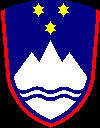
 REPUBLIC OF SLOVENIA
REPUBLIC OF SLOVENIA
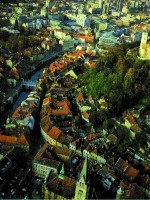
After a 6 hour train journey across the beautiful alpine lands of southern Austria and Slovenia (passing the cities of Maribor, the nation's 2nd largest city, and Celje, one of the oldest town in Slovenia), I reached the small capital of the Slovenes, Ljubljana. This is a small city of only about 250,000 people can easily be covered in, say, 1 day (or even half if you're really in a rush, for it only took 20 minutes to walk across the city's main thoroughfare, Slovenska cesta). I realised this as I asked the tourist office for directions to the cheapest hotel in the city central - the Hotel Park (which charged me DEM50 - the most expensive accommodation of my entire trip) and was told just to walk straight across the city, and "don't worry, nobody has ever lost his way in this city !)

Click here to find out more about France Preseren, the Slovene national poet.
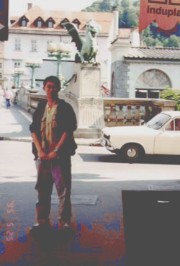
I enjoyed hanging around trg Presernov, the little square where the poet's statue stands and where musicians, couples, salesmen, flower stalls and what have you make this place the most cosy as well as lively part of the city. From the square, the tiny Copova ulica leads one to Slovenska cesta, Ljubljana's main thoroughfare formerly known as Titova cesta (after Josip Tito, the communist leader of old Yugoslavia), and the main post office (where I bought lots of beautiful Slovenian stamps).
One other interesting place is the Illyrian Monument, a pillar dedicated to Napoleon's Illyrian provinces based in Slovenia and Croatia. While this was only one of the several short-lived Napoleonic experiments (e.g., the Batavian Republic and the Grand Duchy of Warsaw), it was the first self-governing experience for the Slovenes in modern history, and is therefore given a special place in Slovenian history.

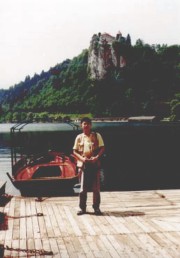
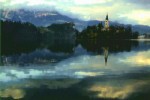
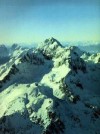
I was tempted to visit the wild Lake Bohinj (& Slovenia's highest peak, Mt Triglav) nearby and hike in the mountains but being a city person and a little bored with this beautiful but quite liveless lake (forgive me - just a personal feeling at that time), as well as frustrated by the unfriendly (perhaps even mildly racist, or maybe her day was bad - but which in any case, had made me felt very unwelcomed) lady at the Bled Youth Hostel, I decided to move on to Zagreb.
![]() My exciting half day in Zagreb, Croatia
My exciting half day in Zagreb, Croatia
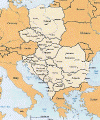 Back to TWC's Mad Rush Homepage
Back to TWC's Mad Rush Homepage
 Please email your comments to weecheng@post1.com
Please email your comments to weecheng@post1.com